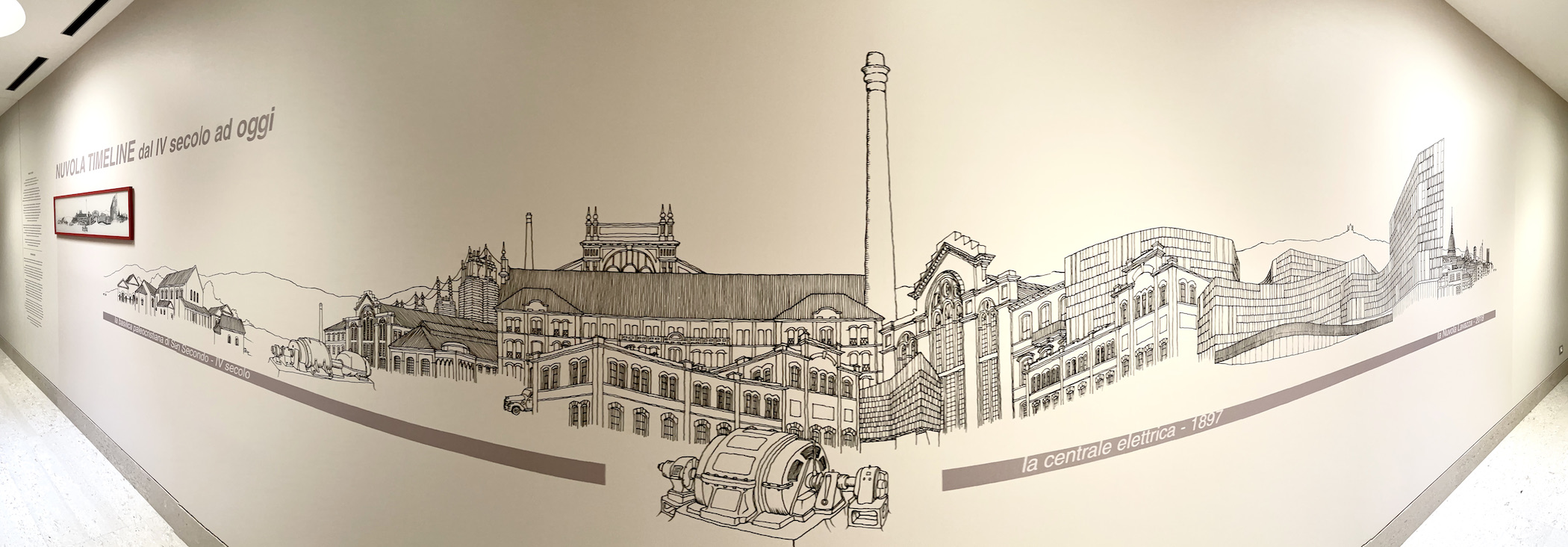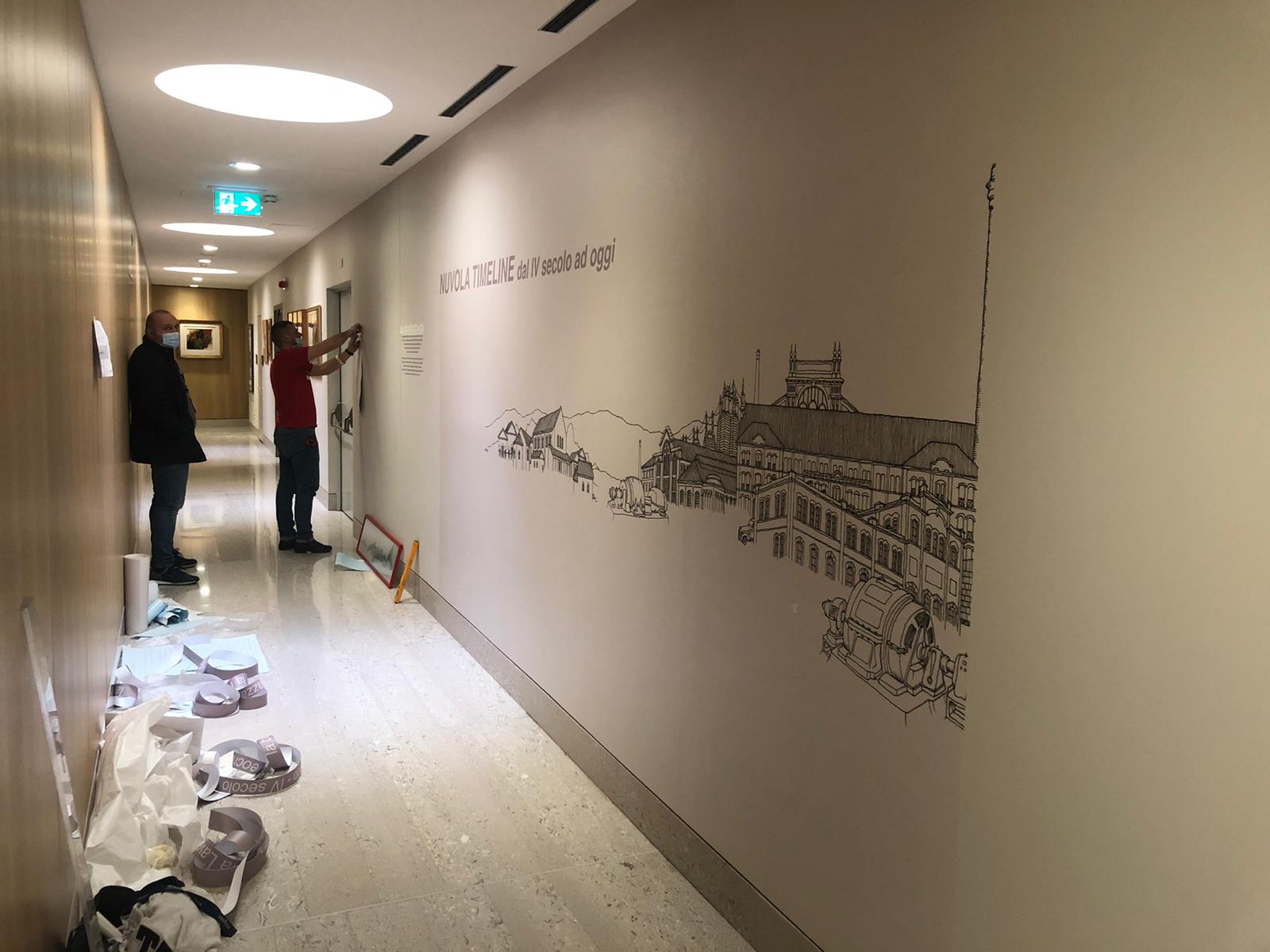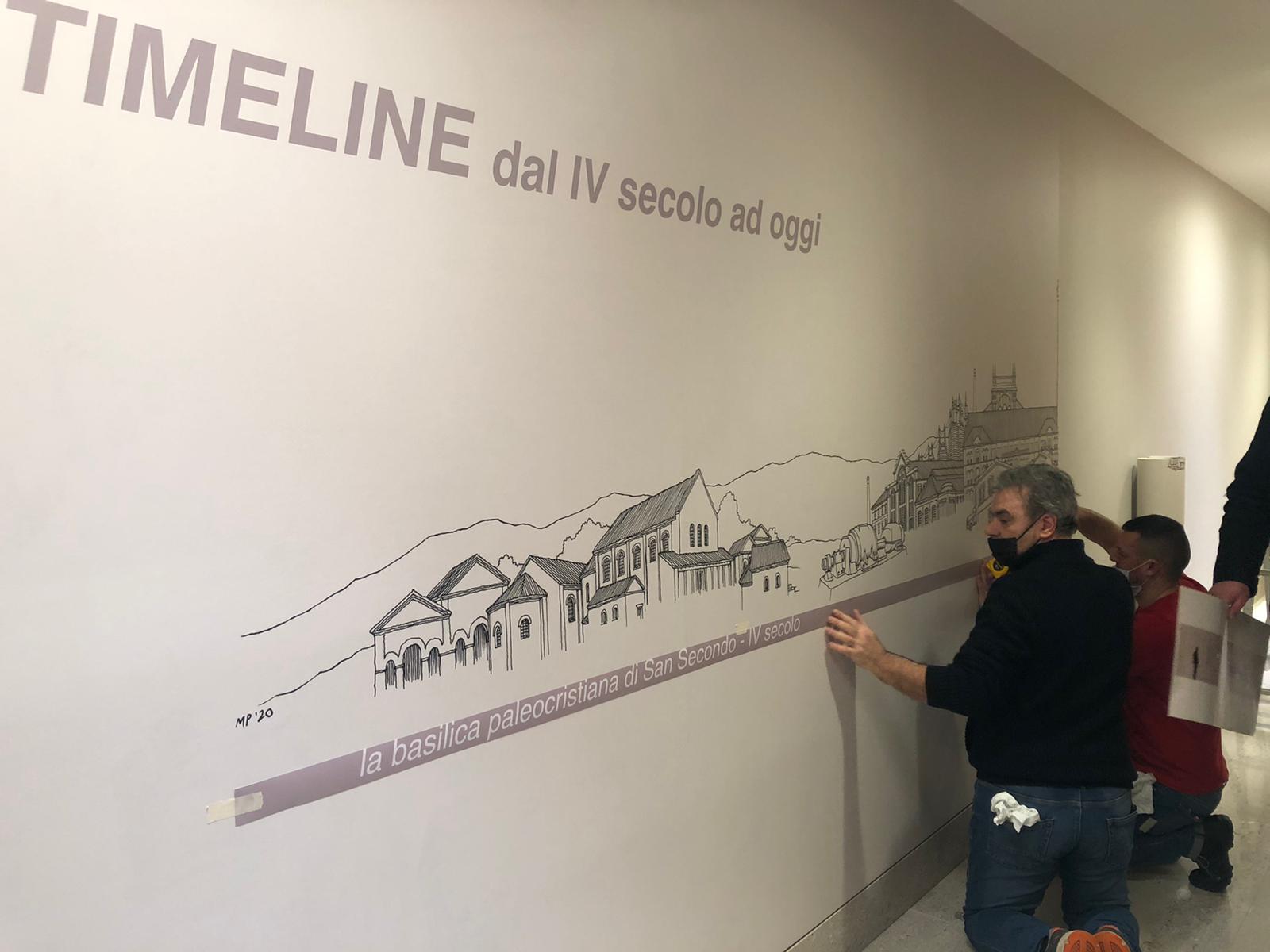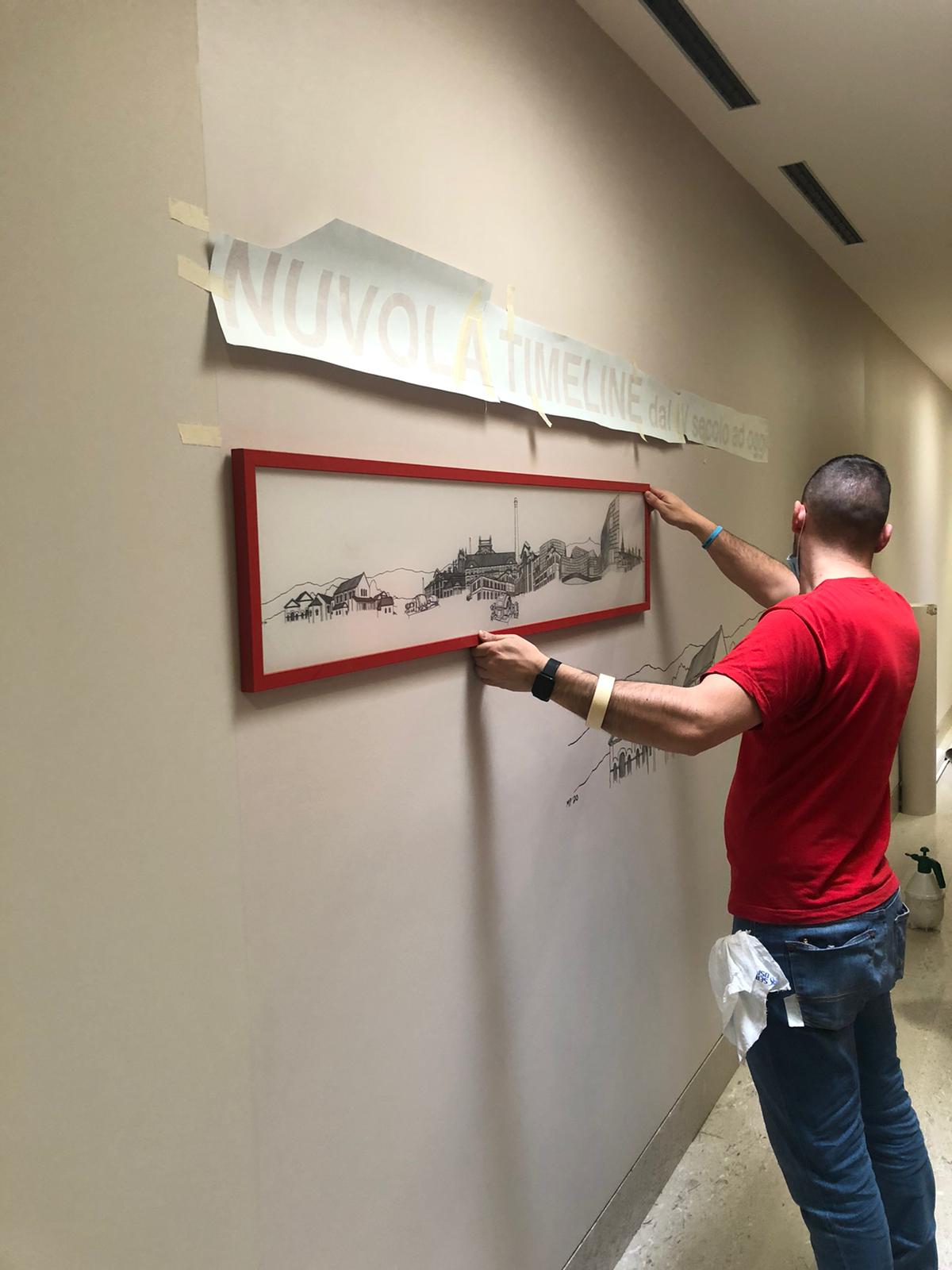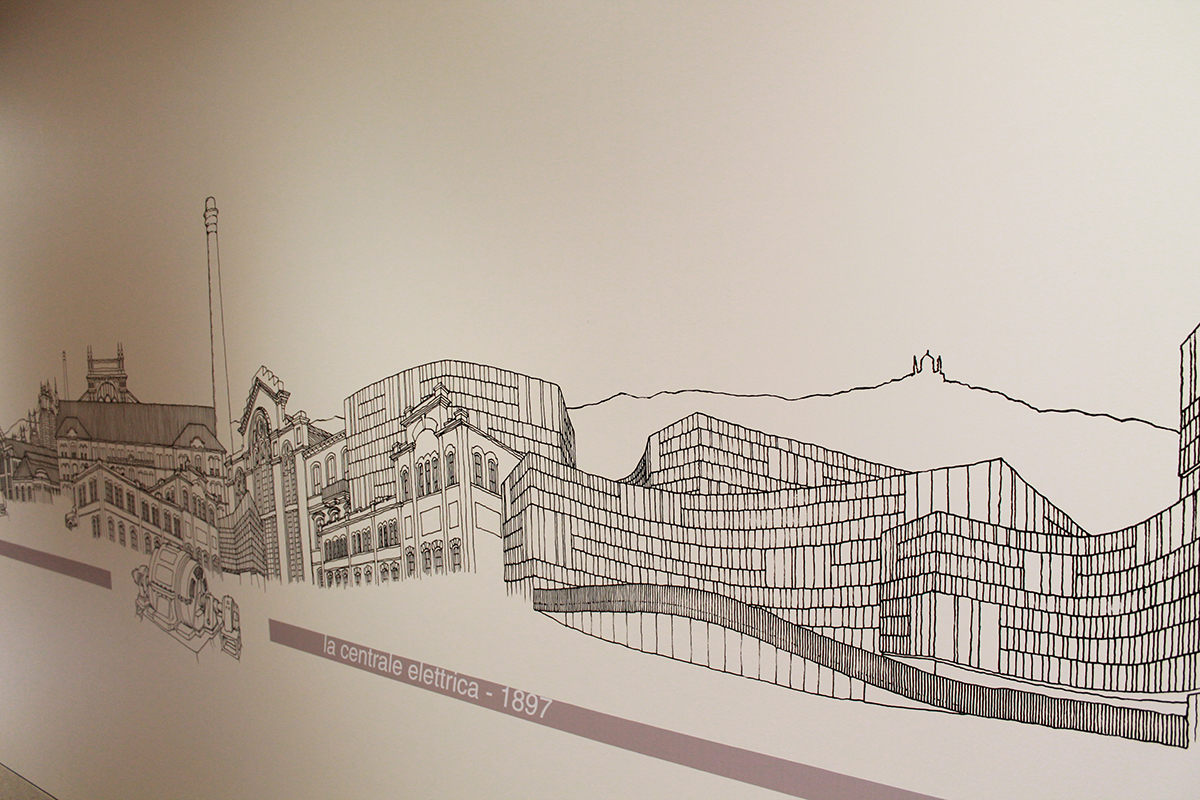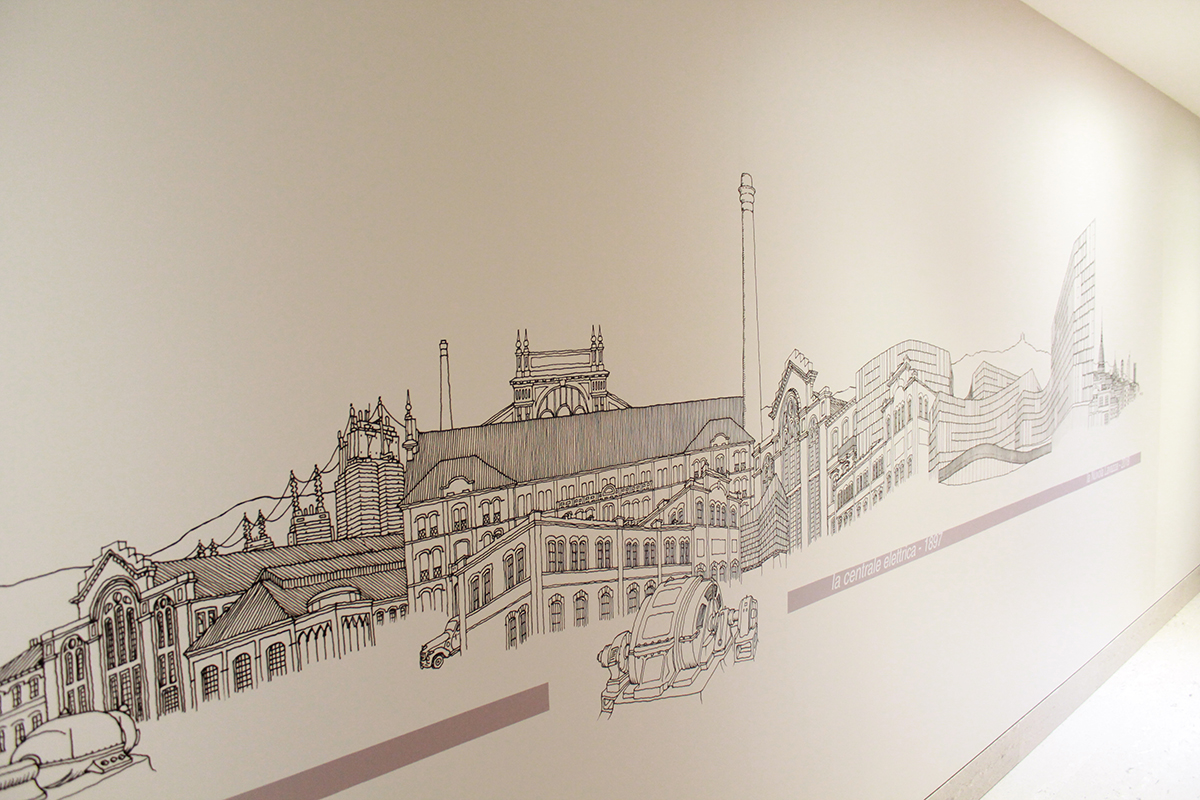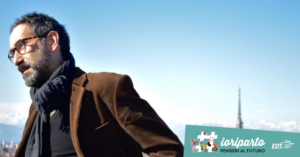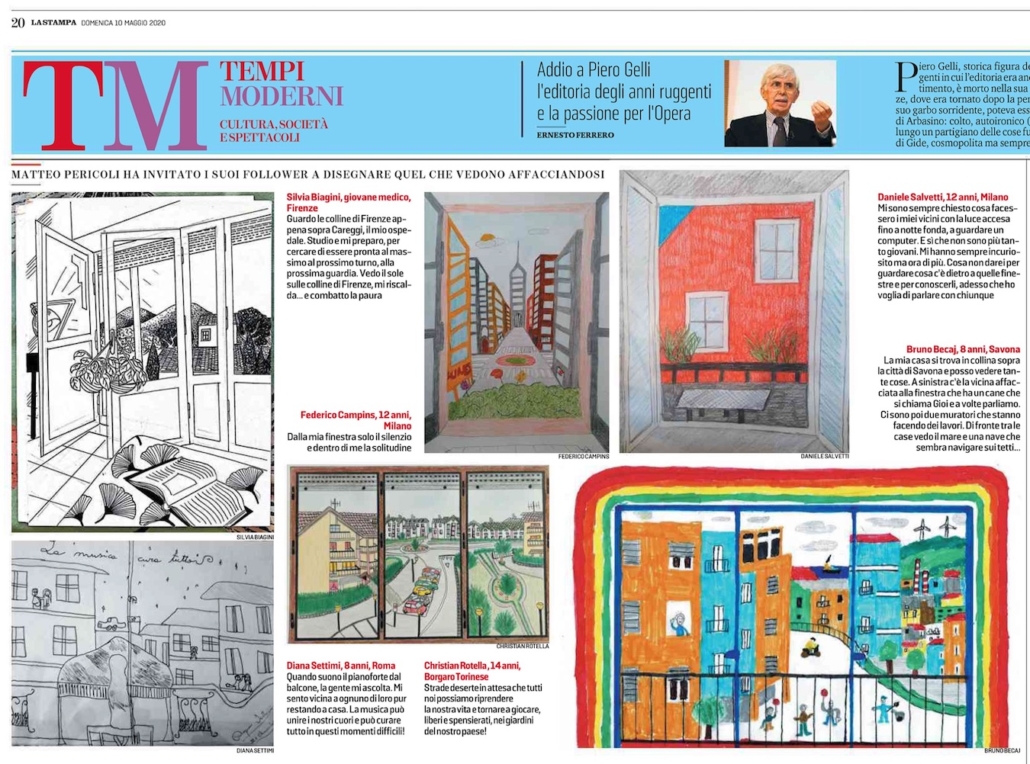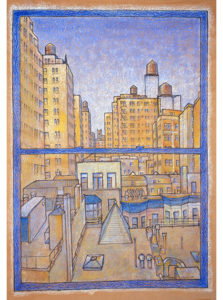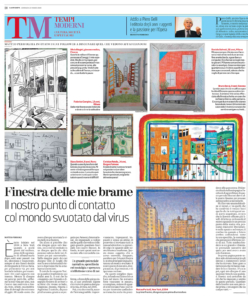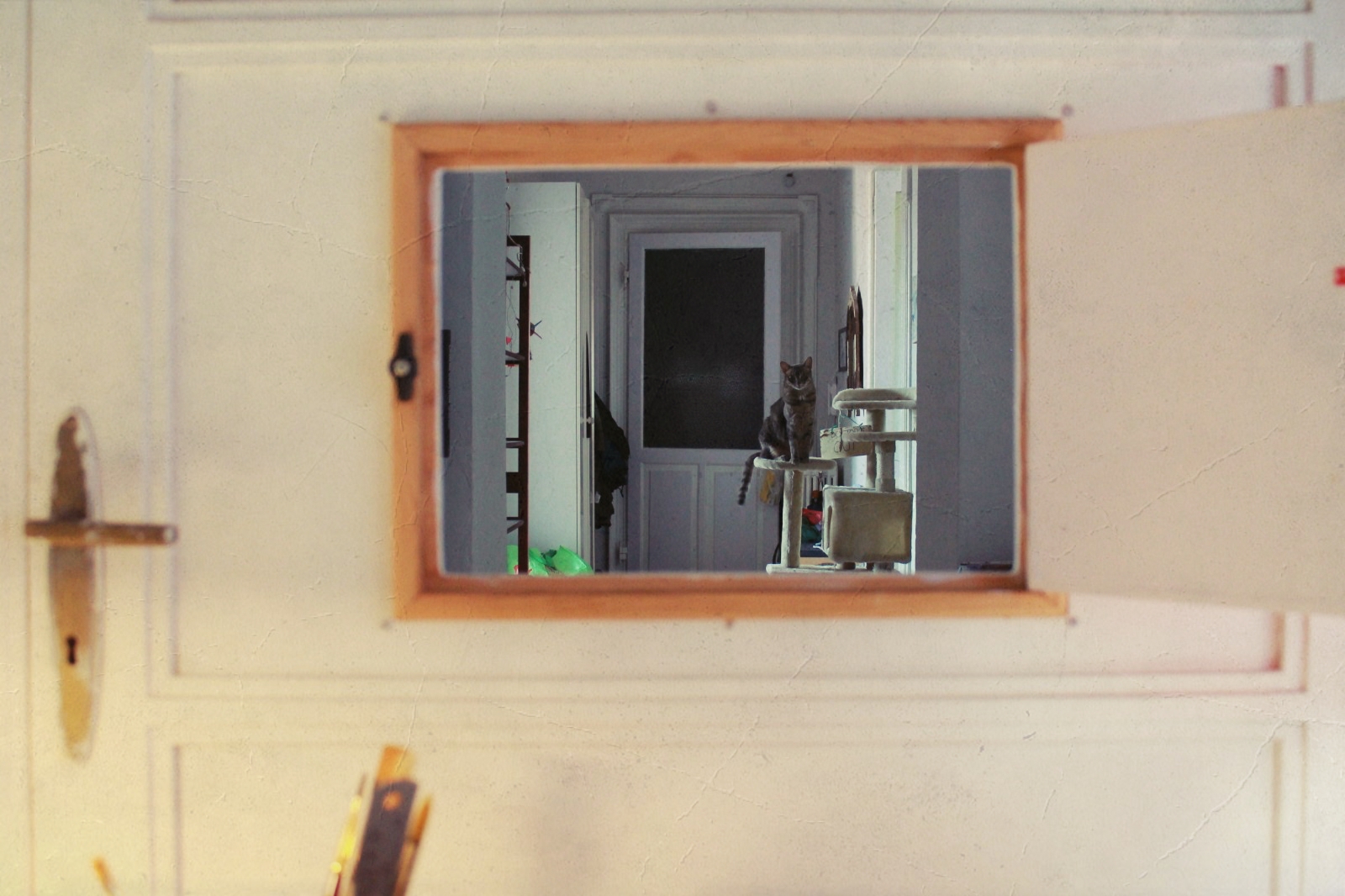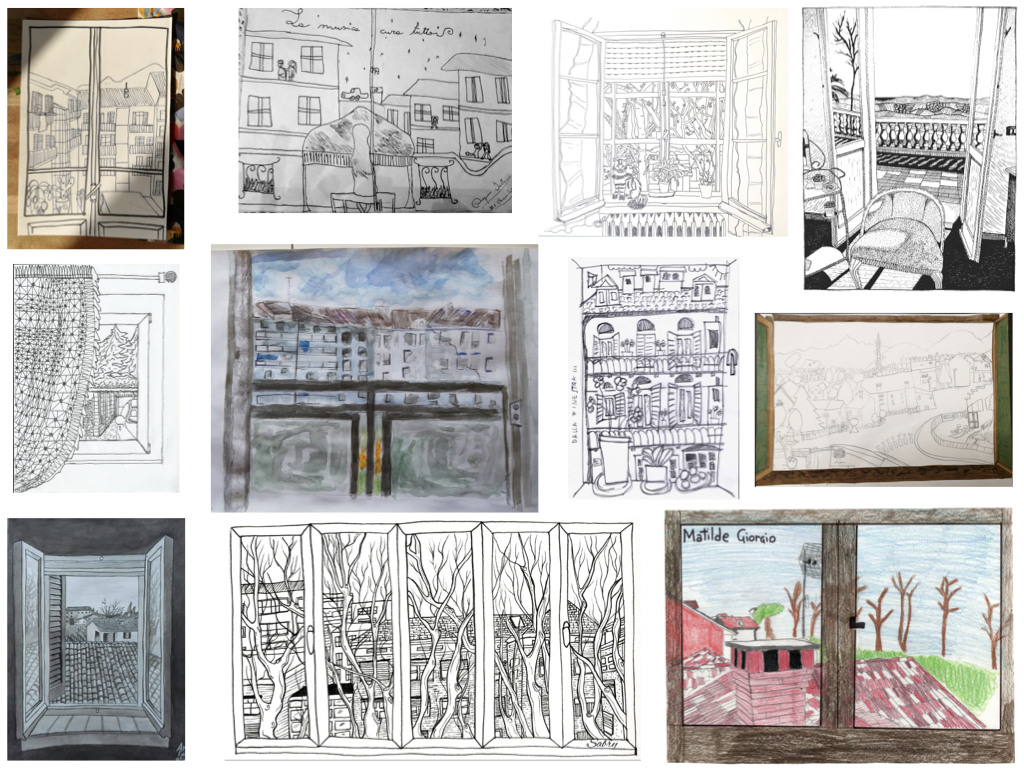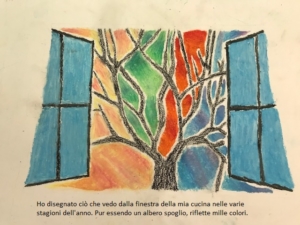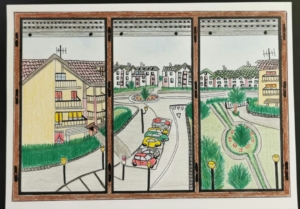63 vues de la Grosse Pomme
New York de ma fenêtre – the French edition of “The City Out My Window: 63 Views on New York” – is here! (And it’s beautiful)
Ho provato qui a rispondere alla casa editrice EDT sul quale potrebbe essere il mio personale “punto di ripartenza”, o un’“idea di ripartenza”:
https://www.edt.it/ioriparto-matteo-pericoli-affacciarsi-al-futuro
Il nostro punto di contatto col mondo svuotato dal virus
di Matteo Pericoli
È tutto iniziato nel 2004 a New York quando, a pochi giorni dal trasloco, preso dallo sgomento di abbandonarla dopo setti anni passati con lei, silenziosa e trasparente, sempre al mio fianco decido di disegnarla in fretta e furia, per portarmela via, per non lasciarla indietro, per mantenere vivo quel rapporto così intenso. Mentre la disegno mi accorgo però che, sebbene l’avessi vista per anni, non l’avevo mai osservata a fondo. Noto, infatti, una moltitudine di dettagli che mi erano sfuggiti. Mi rendo conto che avevo dato per scontato la vista dalla mia finestra.
Da allora si potrebbe dire che disegno quasi solo finestre, cerco cioè di restituire in un disegno quello che altre persone vedono dalle loro finestre per poi “raccontarle”. Nella maggior parte dei casi disegno viste di luoghi che non ho avuto la fortuna di visitare e di persone che ho a malapena conosciuto.
È così che ho scoperto Torino quando ci trasferimmo qui dodici anni fa. È così che ho “viaggiato” per il mondo e disegnato finestre di scrittori e scrittrici che vivono in India, Giappone, Islanda, Nigeria o Argentina. È così che, da poco più di un anno, grazie un progetto per Amnesty International, sto imparando a vedere anche quello che vedono i rifugiati quando guardano fuori dalle loro nuove finestre.
In fondo, in tutti questi anni sono stato alla ricerca della conferma, o forse della spiegazione, di quel profondo legame che mi aveva spinto a disegnare la mia, di vista, nel 2004.
Poi, circa due mesi fa, succede l’inimmaginabile: improvvisamente, impreparati, impauriti e senza un attimo di preavviso ci troviamo tutti in casa ad attendere e a sperare. Di colpo lo sguardo dalle nostre finestre si trasforma. Questo strano “oggetto” che io avevo osservato, disegnato, ascoltato per 14 anni diventa la nostra principale inquadratura su un mondo svuotato: il nostro punto di contatto, di separazione, di protezione, e di speranza e unione.
Da questo semplice riquadro, in fondo null’altro che un buco nel muro che avevamo forse trascurato in passato, ora migliaia, milioni di sguardi si intrecciano l’uno con l’altro per ricostruire quella densa trama che era la vita precedente alla quarantena. Di slancio chiedo sulla mia pagina Facebook di approfittare di questo periodo bloccati dietro alle nostre finestre per provare a disegnarle e a raccontarle.
Ho ricevuto una moltitudine di lavori, e tra quelli che ho condiviso è venuto fuori quello che in tutti questi anni avevo sospettato, ovvero che le finestre offrono più livelli di lettura: collocando il nostro sguardo in un preciso punto della nostra vita, possiamo muoverci liberamente nello spazio e nel tempo; il confine tra passato e futuro sembra confondersi; come in uno specchio, la nostalgia e la speranza si riflettono verso di noi. Tutto sembra fondersi in un grande e illimitato potenziale narrativo del quale per anni avevo avuto solo il sentore.
In questa pagina potete vedere solo alcuni esempi tra gli intensi e commoventi lavori che ho ricevuto. Sono grato a tutti coloro che mi hanno mandato le loro finestre. D’ora in poi, ogni mio disegno di una qualsiasi vista da una qualsiasi finestra sarà arricchito da ciò che ho imparato e sentito in questo periodo. Guardare dalla finestre non sarà più come prima, e mi auguro che sia così per tutti.
The other day my friend Azzurra Muzzonigro asked me to contribute a short piece about how my work space and routine are overlapping with my family’s domestic life and space in our Turin (Italy) apartment during the lockdown for a feature on her blog called “Domestic space is the new public space”. Here’s what I told her.
My current daily routine is actually very similar to my previous one, seeing that I basically work in a large closet at the end of a long hallway from which we removed a wall so that I could access it from the adjacent bedroom rather than from the door. When we moved in, we had a small opening, a “window” of sorts, cut into the door at the end of the hallway at the height of my daughter’s face (who at the time was seven years old), which ended up right at my eye level, so, upon her knocking, I could open the little panel that covered the opening and see her smiling face perfectly framed in my own “little window”. Luckily, I still have a “real” window in the bedroom next to my studio/closet that looks at the now quiet and deserted outside world (and much further away the hill of Superga).
What is different now is that my little studio/closet window, which opens onto the hallway, is being opened and closed a lot more often, because beyond it there’s a lot more life. I hadn’t thought about it, but this opening has become my true inside/outside view onto a series of intense intra-domestic movements: my wife going from one room to the other, ending up in the living room where she works and where she holds her lessons; my daughter wandering from room to room before ending up in her bedroom where she tries to recreate her social and academic life. There’s actually a great coming and going right before me. And this little window that until just a few weeks ago was used mostly to keep an eye on what the cats were doing (usually sleeping) — or to throw them a crumpled up piece of paper so they would quit bothering me, or that I would use to say hello to whomever was coming in from the front door (at the other end of the corridor) — has now become my primary window looking out at a home bustling with life and activity, full of new and complex interactions; of inventions and revelations; of hope and anticipation; and, sometimes, of tension and anxiety. Even the cats are more active. Well, Ralph, the male, isn’t, he still sleeps a lot; but Marlene, the female, doesn’t seem to understand why we’re always around, why this small window that used to stay mostly closed gets instead opened all the time; and why these weekends are lasting an eternity.
With so many people around the world being forced to stay at home, our windows have taken on a much more profound and metaphoric function than ever before. In essence, they have become our primary point of visual contact with the world — a contact that both protects and separates us, but at the same time unites us.
This familiar hole in the wall, to which we had probably never paid much attention, has suddenly become an imposing snapshot of a moment — a huge and strange moment that we are living together from inside our homes and our selves.
About a month ago, when Italy went into lockdown, on my Facebook page I asked people to share a drawing of their window view together with a short text. I’ve received many amazing contributions, many of which from kids. Check my Facebook page to view them — they convey a powerfully shared feeling of anxiety, suspension, nostalgia, and hope.
It would be wonderful if as many of you as possible, wherever you are around the world, contributed to this collection of viewpoints. Take a moment to observe what you see out your window and then try drawing it using the window to frame the view. Then write a paragraph describing it. What do you see? How far can you see (“far” both in space and time)? And how does the view reflect back on you? What do you notice that you hadn’t seen before?
Please share this post as much as possible. Then draw, tell, and share your window views! In the end we will have a collective vision of the world as seen through the eyes of a multitude of individuals who are sharing a common experience.
If you would like me to see your work (and perhaps share it), please mention my name or my Matteo Pericoli public page so I can find it; and please use the hashtags #mywindowview and #windowsontheworld.
Click here to view the post on Facebook:
https://www.facebook.com/Pericoli.Matteo/posts/10157158797587083

Tommasio Giartosio intervista Matteo Pericoli
Qui il link alla puntata di Fahrenheit del 27/12/2019:
È finalmente arrivato!
Finestre su New York: 63 visioni sulla Grande Mela, un libro (e una copertina) da aprire.
“63 visioni di New York. 63 sguardi dalle finestre di artisti, registi, scrittori, musicisti, filosofi, scienziati e persone comuni che Matteo Pericoli ha incontrato, per poi ritrarne gli scorci e realizzare una storia inedita della Grande Mela: il racconto della città, fatto di sensazioni e confessioni, da parte di alcuni tra i suoi personaggi più famosi.
Matteo Pericoli disegna ognuna di queste intime vedute, intrecciandole per comporre un quadro più grande dei meri limiti urbani della città. E così ci invita a compiere un gesto insolito per la frenesia delle nostre vite: affacciarci alla nostra finestra, rimanere qualche secondo a scrutare e interrogare il mondo, fino a diventare una cosa sola con ciò che vediamo.”
Selezione di rassegna stampa:
-
14 febbraio 2020: Benedetta Marietti su il Venerdì di Repubblica
-
13 gennaio 2020: Luca Verrelli su Uozzart
-
27 dicembre 2019: Tommaso Giartosio intervista Matteo Pericoli a Fahrenheit Radio 3
-
19 dicembre 2019: Manuel Orazi su Rivista Studio
-
27 novembre 2019: Alex Urso su Sky Arte
Alcuni appuntamenti:
-
Lunedì 27 gennaio 2020 ore 19: Presentazione e inaugurazione mostra “Finestre su New York”, Colibrì, Milano — con Azzurra Muzzonigro
-
Giovedì 12 dicembre 2019 ore 8:30: CAP10100, Torino — con CreativeMornings Turin
-
Martedì 10 dicembre 2019 ore 21: La Galleria del Libro, Ivrea — con Gianmario Pilo
-
Mercoledì 27 novembre 2019 ore 18: Eggers 2.0, Torino — con Alessio Cuffaro e Gianmario Pilo
-
Sabato, 16 novembre 2019 ore 17:30: Combo, Milano (per Bookcity) — con Marta Cereda
An essay by Colum McCann published in World Unfurled by Matteo Pericoli
(Chronicle Books, 2008)
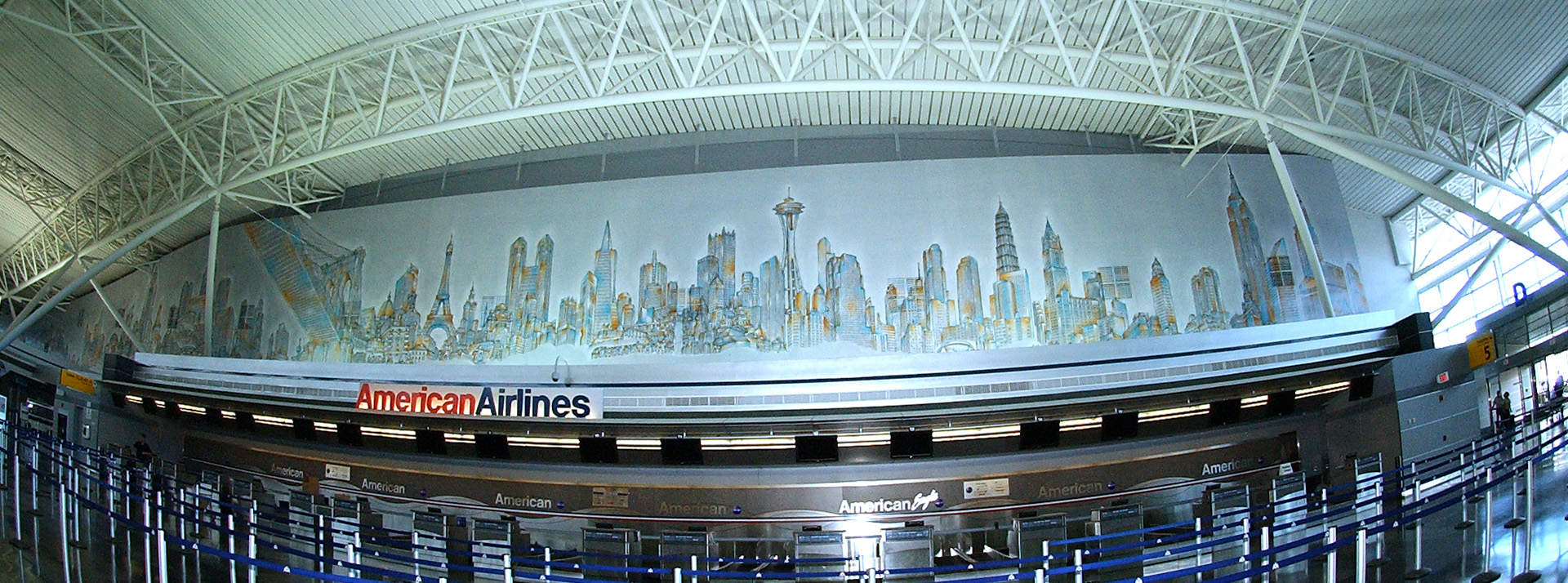
The American Airlines mural by Matteo Pericoli at JFK International Airport in NY (Photo by Richard Slattery, May 2007)
We leave: it’s inevitable. We sometimes come home: that’s our choice. In the process, we can bring our home country to another land, or we can cart that other, distant country back toward our own and sometimes make it new. And so, every building we have walked through begins to walk through other buildings. Every city skyline we see is informed by the skylines we have glimpsed before. All that we have met meets all that we will meet.
We are connected and remade by what we have seen.
I grew up in suburban Dublin, Ireland. I can still hear the ticking of the white radiators. The back door slammed when the front door opened. A house of open windows, I was always flying out of them.
I first left home when I was seventeen. I went to Mayo, less than one hundred and fifty miles away. The newspaper building where I worked was down a cobbled laneway. I loved the creak of the stairs, and the rattle of the printing presses below. I took the train back to Dublin only once that whole summer. It seemed to me like an enormous journey and I recall how thrillingly new my doorstep felt when I returned: it was like stepping onto brand new territory.
Not long afterward, I broke the border of home again, and went to New York. My heart thumped in my cheap white shirt. I got a job as a cub reporter in the Time Life building and, fired up on innocence and a brash enthusiasm, I ran down Avenue of the Americas, then stopped and lay flat on the ground—for an instant, passersby had to step over me. It was the only way for me to glimpse the panorama. The skyscrapers dizzied me. It seemed impossible that there could only be a small scrape of blue sky. Later that same evening I brushed the dirt off my trousers, ran to catch the D train, got out at Brighton Beach, and rented a tiny room in a clapboard house that smelled of roach spray and sea breeze. I flopped down on the dingy mattress. How, I wondered, could two such diverse settings exist in one city in a single day?
It seemed to me, even then, that sometimes we have to go far away to explore the dynamic possibilities of our own naivety.
A few years later I took a bicycle across the United States. I rode the little blue highways and the back roads. The stars were my ceiling. Camping out, in forests and by riverbeds, I spent eighteen months learning the roof of the world. From there it was on toward Japan. The sun caught the top of a Kyoto shrine. My wife and I rented a six-tatami-mat room. Later we found an apartment in the shadow of a Kyushu mountain. Then it was back to New York once more: countless windows outside our window.
There have been so many places since. The clean steeples of Singapore. A villa in Capri. A wooden hut in Slovakia. A church in Saint Petersburg. The tall pillars of the Brooklyn Bridge, strung with wires like a harpsichord. Some of these places have been the sites of fleeting visits, others are regular haunts. My memory is decorated by a series of mirrors that throw color and sound onto yet other mirrors: these places flash across my mind and collide into each other, touch at odd angles, then mingle and disperse.
It strikes me now that the purpose of remembering—and perhaps even the final purpose of travel—is to depict, and therefore render forever present, that which is absent. We return by leaving. Travel is a process of deep renewal. Every time I go away, I am back on my New York doorstep. Every time I am on my New York doorstep, I am stepping away into all those other places I have gone and will go.
I am a citizen of my own imagined elsewhere.
♦
It is difficult to find a grand public adventure these days. This is both good and bad news. Newspaper editors aren’t really captivated by an eighty-day journey around the world. Scaling the world’s highest mountains is easy enough if you’ve got the money for it. It’s hard to find a place where a foot hasn’t already been placed, a field that hasn’t been trampled. The Earth is as mapped and documented as never before. On the other hand, adventure has become an acutely democratic notion. A lot of us are lucky that the world has shrunk: we can go places our forefathers couldn’t even have dreamed about. But the primary adventure occurs now in our imaginations.
Passing through the automatic doors into the vast white space of Terminal 8 in New York’s John F. Kennedy airport, one is immediately drawn to Matteo Pericoli’s mural, “Skyline of the World.” Here, in a sense, is the beginning of travel. The eye finds no resting place. The mural runs along the swooping roofline, the full length of the eastern wall, a block and a half. It is 52 feet in height, and covers almost 16,000 square feet. A viewer might feel as if he has one foot in the vanished past, the era of high-ceilinged railroad stations, and another foot in the open terminal of tomorrow.
Place and time are bundled together. Seventy cities and four hundred and fifteen buildings merge into one. Each place dissolves into the next. The Sydney Opera House nudges up against Toronto’s City Hall. Stroll down the hill from Los Angeles and you’re standing near the Jantar Mantar Observatory in New Delhi. A canal slips around the Foshay Tower: how is it that the waters of Venice have suddenly migrated to Minneapolis? The Fred and Ginger building in Prague rises up to meet Bangkok. And the Brooklyn Bridge stretches out like a great hand that wants to reach inside your ribcage and twist your heart a few notches backwards.
The content of Pericoli’s work, if I may dare to state it in a single word, is memory. For him, recall is a creative act. He invites us into a landscape in which the viewer can thrust his or her own past, and at the same time he allows us to step beyond the boundaries of our lives. Remembering becomes an act of the imagination, a process without borders or gateposts. Here’s another city—indeed, another country— but we’ve all been there already. Still, it’s a city made entirely new, as if it has gone through the process of radical recycling. There is a sort of madness here too, a shrinking of the world through the marks of a pencil. Perspective is shifted. The geometry is jagged. Yet the drawing maintains a form that we recognize, a series of intimate lines and well-known landmarks that are both stunning and perplexing at the same time.
Pericoli has created a trance city, in hues of gray, blue, orange, and white, built on our own memories of previous travel and expectations for the journeys we are about to embark on.
Fittingly, we don’t always know where we are when we examine it. Walk down off the Brooklyn Bridge and enter the city of Zurich. Turn left and you’re in Kingston, Jamaica. Swivel around and you’re in Bogotá.
Some of the buildings are instantly recognizable despite their jumbled placement, as if a surreal postcard has just landed, undated, on a terminal wall. But others are relatively unknown. Pericoli has even included his grandmother’s house from a small Italian village, and an imaginary building by artist Saul Steinberg.
“A memory of a journey is a memory in which time and space are mixed up,” Pericoli has written. “They both seem to vanish, as distances and places tend to be compressed into a single, intense yet detailed blur. After a trip, the famous landmark you just visited will be imprinted in your brain as much as the undistinguished building you saw from your hotel room window.”
Although the buildings are chosen for their architectural and aesthetic value, there is surely an understated political intent in play: the buildings are placed beside each other almost as if they could—and should—learn from each other. East meets West. South meets North. They learn from one anothers’ curves and angles. They don’t feel forced or sandwiched in. This statement of potential compatibility takes place not only in a geographical context but also in a manner that’s refreshingly anti-chronological: so that the Azadi monument in Tehran, for instance, built in 1971, is in sight of the Kremlin, which dates back to the fourteenth century, which in turn is just down the hill from La Pedrera, the astonishing “sculpture house” created by Antoni Gaudí in 1912, and now designated a World Heritage Site.
This ability to cross through periods of time, and to create a believable international landscape, and then to invite us to inhabit it—and maybe even to re-inhabit it—is something not many artists, let alone politicians, have ever contemplated. Pericoli demonstrates that nothing original is created through predictability. Even cities might want something better than what they already have, a new perspective, a surprising neighbor.
♣
After looking at “Skyline of the World” for a long time, I began to wonder if Dublin might be represented somewhere, tucked away at the edges, or maybe even in the foreground? I recognized a good deal of the landscape. Seattle’s Space Needle. The Empire State Building. The Jubilee Church in Rome. Still, many of the mural’s buildings mystified me. I wanted to peep over the shoulders of the cornicework and discover what was on the other side.
What would happen if my mind were able to pull the drawing apart, allowing me to climb inside?
I found myself walking into the drawing, turning the corner around a mosque toward a citadel, up the street to a glass tower, down an alleyway toward a mysterious house in the shadow of a water tower. Suddenly there were birds and weather and people around me—all things that are absent from the public face of the mural. The further I walked, the more I saw. But so much of the landscape remained foreign to me. On one street, I was lost. On the next I was found. It was like seeing an old friend and then waving good-bye.
And then, suddenly, there was the inner city of Dublin, right in front of Pittsburgh, just next to Valparaiso, on a hill above the Seattle Public Library. I could almost smell the water off the Liffey, see the traffic trundling down along Burgh Quay, hear the hawkers in the alleyways of my youth. I heard footsteps. The opening and closing of doors. I realized then that I am constantly leaving, trying to discover new places, both imaginatively and physically, and yet always coming closer to home.
♠
But let’s face it—even the best airports are exercises in contemporary vulgarity. Travelers are tense. Officials are on edge. Security guards are suspicious. We take off our belts, our shoes, and our jewelry and are shunted through a metal detector. We leave behind water bottles, lighters, key chains. The flight announcements sound out around us. The cell phone user behind us seems to think that “etiquette” is a village in France. The departure screens hold news of delays. We invariably end up in the longest line, listening to inescapable tinny Muzak floating through the air.
At the worst of times, it seems as if there might be no escape. Travelers are locked in. Most airports break up the sight line with ads, or blankness, or a crass nod to the corporation itself. But somehow, when it came to designing the interior of Terminal 8 in JFK—possibly one of the last airports where one might expect it, given the distinct lack of imagination most of the older terminals display—American Airlines managed to avoid slapping its own back. They refused the temptation to even put a plane in the skyline. The terminal itself can be seen in the far left-hand corner, but this seems more like a postmodern wink than an advertisement.
The mural came about through an odd collision of mistakes, reconsiderations and brave imaginative gestures. The terminal was originally supposed to be much larger, but after 9/11 the plans were scaled back and American Airlines were faced with the prospect of a blank wall almost 400 feet long. Airline officials had seen Pericoli’s previous work and they contacted him in January 2005. They wondered if he’d be able to fill the space somehow. Pericoli loved the challenge of combining his architectural background with his artistic instincts. Trawling the Internet and his memory both, Pericoli began to sketch. He assembled photos from cities all around the world and then copied them meticulously into place. His battery-powered pencil sharpener sat at the ready on his desk. He used 2B pencils on vellum, allowing him to excavate the drawing with what he terms “a fresh palette.” He found an order in chaos and beauty. He never once used a ruler. Of course, it would have taken many years to do the drawing directly on to the wall, so instead he toiled at home in Queens on a drawing that was one thirty-second the size of the final mural.
Month after month, his dreamscape grew.
When the drawing was finished, it was sent to Professional Graphics in Illinois, where it was photographed in sections using a Hassleblad camera with a Sinar digital back. The trick was to enlarge the drawing without destroying it. Every inch would be almost three feet high. Suddenly every window ledge had a potential jumper, an art critic at each precipice. If Pericoli had gotten it wrong, they’d leap. But it was here that the artist’s attention to detail paid dividend. Pericoli is, I feel, the sort of artist who could be entrusted with the last grain of sand, perhaps one of the few who’d be able to capture its complexity. With “Skyline of the World,” he was so careful with his pencil work that the intimacy could be blown, quite literally, sky high.
Professional Graphics printed the drawing on almost one hundred vinyl panels, which ranged in height from 30 to 52 feet high. The printing process alone took the better part of ten days. The installation—the application of the massive sheets to the wall of the terminal—took months of planning. Of course, the drawing, as in any good work of art, really took a lifetime.
The mural went up in May 2007. Applause rang out from architects, security guards and travelers alike. From some parts of the terminal the view of the mural is obstructed: rather than a mistake, it seems like a conscious attempt to interrupt the sight line, as might happen in any real city. Even the slits on the walls, where the drawing must give way to the air conditioning vents, seem to be a tongue-in-cheek nod to the fantasy at play here: a strange wind blows around this landscape.
Ukranian writer Vitali Vitaliev has said, “A good traveller doesn’t know where he is going, but a perfect traveller doesn’t know where he comes from.”
Pericoli’s work is both tactile and clued in. He is very much an artist of the world. He is known for his compelling drawings of the Manhattan skyline and of the view from Central Park “outward.” But his imagination also seems to live in a gyre—for him, cities appear to spin in elaborate circles. He can induce a sort of vertiginous tornado in the viewer. There is turbulence and then there is a touchdown.
We are in a place we knew, but he has made it different for us. In this sense, even more than a traveler, Pericoli is a perfect guide. He leaves people out of his drawings precisely because he knows that they will eventually walk themselves in. They will find their own Dublin. Or Tokyo. Or New York. He opens up the windows of all these cities and invites us to fly outward from them. The skyline, therefore, is our own. He has allowed us that most revelatory moment of creativity when we look up and think that, even if we have once been in that place and have left it, we would one day like to return.
We leave. And we sometimes come home.
Occasionally the walk is only the length of a city block. A departure, if you will. A moment away from the security gate.
Visit Colum McCann’s website
In one of my rarely-opened drawers, I stumbled across this September 12, 2011 issue of The New Yorker magazine with a portion of my original, 2001 West Side drawing from Manhattan Unfurled (top) and a 2011 drawing of the same section of the skyline (from Canal St. to the Battery).
Click here to watch a New Yorker video about the making of the drawing:
https://matteopericoli.com/2014/07/22/the-new-yorker-video-matteo-pericoli/

